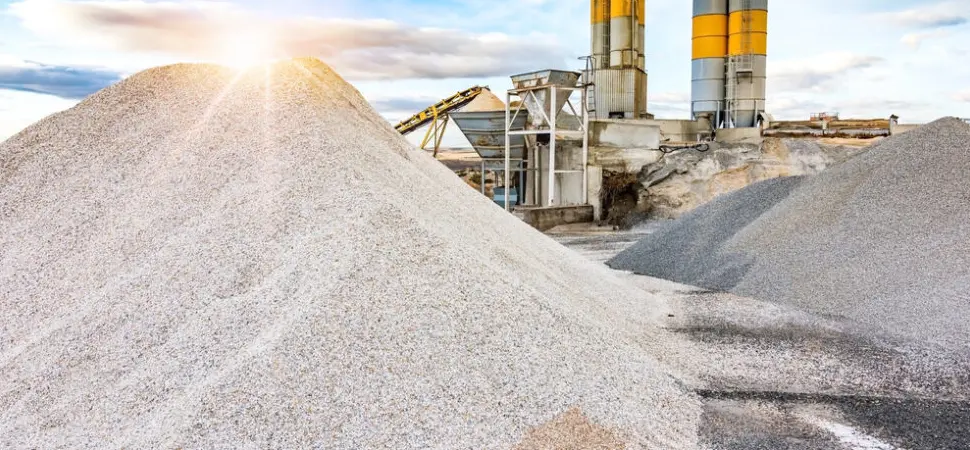The cement industry is undergoing an upheaval, with large-scale investments that promote innovative opportunities to improve the industry and combat carbon leakage. The generosity of investors will be an opportunity to start the process of decarbonization of pre-combustion processes, which will certainly have a positive impact on the environment and the global warming problem. As the owners of cement industries are actively fighting to reduce the emission of greenhouse gases, which will definitely have a new positive start in the fight for ecology in our world.
Expert commentary
Le Monde de l'Énergie talks to Laure Elard, managing director of France Ciment, about the impact of a carbon tax on the European cement industry.
Le Monde de l'Énergie - What is the principle behind the European Union's Border Carbon Adjustment Mechanism (BCAEM), also known as a "border carbon tax", its specific measures and the timetable for its development?
Lor Elar - The European Union Border Carbon Adjustment Mechanism (BCAEM) is that certain products imported into the customs territory of the European Union are subject to carbon prices equivalent to those applied to European producers of the same products in the European Carbon Market (known as the "ETS" - European Trading Scheme). Under the ETS, steel, aluminum, cement, nitrogen fertilizer and hydrogen are subject to an equivalent CO2 price regardless of whether they are produced in Europe (through the ETS) or imported (through the ETS).
Objectives
MACF aims to combat carbon leakage, i.e. the process of moving carbon-emitting industrial production outside the EU to countries with less stringent environmental legislation, and to promote global decarbonization and climate neutrality by 2050.
Once MACF is implemented, starting in January 2026, importers will be required to submit an annual declaration containing, among other things, the quantity of goods imported and the total CO2 emissions embodied in those goods. MACF certificates will be issued on the basis of these declarations. Between October 2023 and December 2025, there will be a transition period during which importers will be required to file declarations but will not pay for MACF certificates.
A conversation with an expert
Le Monde de l'Énergie - How can this help to decarbonize the European industry? How does this relate to the end of free CO2 emission quotas?
Laure Elard - The cement industry is preparing to invest heavily in decarbonizing its processes. As part of the decarbonization roadmap, the industry has set very ambitious targets: a -50% reduction in CO2 emissions by 2030 with the goal of achieving climate neutrality by 2050. Against a background of historic investments and pressure from imports from countries that do not apply the same environmental and climate rules, MACF is one of the conditions to ensure the competitiveness of European industry and achieve the ambitions of the European Green Deal. MACF is also a means of encouraging Europe's trading partners to decarbonize their own industry.
Under the European Carbon Market (EU ETS), European Union industries that emit greenhouse gases must buy emission allowances based on the number of tons of CO2 they emit. This is the "price of CO2" or "cost of carbon". Until now, the solution to the carbon leakage problem has been to allocate a share of the "free" allowances to these European companies. The EU is about to put an end to free allowances, which will gradually disappear by 2034. The MACF is therefore necessary to keep European industry competitive and to prevent imports of much more carbon-intensive products: production in Europe (via the "ETS") or imports (via the "MACF") must have the same CO2 price.
Impact of investments
If decarbonization investments are massively prioritized in non-European industries, and if these industries continue to enjoy favourable conditions such as favourable energy prices, the European industrial sector will cease to be competitive in the face of non-European imports of decarbonized products. In the current investment race, we urgently need to develop plans to support various decarbonization projects and give the sector access to competitive electricity. The integration of electricity-intensive capture technologies will exacerbate the competitive imbalance that exists today and thereby exacerbate clinker imports.

Greenhouse gas emissions
Cement sector emissions in some European countries have declined by 40% since 1990, from 17.7 million tons to 10.3 million tons in 2015. While part of this decline is due to falling production, cement producers have long been working to reduce emissions. They have several levers at their disposal, such as improving energy efficiency, replacing fossil fuels with non-recyclable waste and reducing the clinker content of their products. CO2 capture is an important lever for the cement industry, given the fatal emissions of the cement process (emissions caused by decarbonization of limestone, i.e. 2/3 of all emissions). However, capture only becomes feasible once all other levers have been activated.
These levers are outlined in the industry's decarbonization roadmap, presented in May 2023, which contains ambitious CO2 reduction targets of: -50% by 2030 to move to carbon neutrality by 2050. This roadmap is the result of extensive consultation with public authorities.
MACF's main limitations
Although MACF is attractive from a theoretical point of view, its practical implementation raises a number of questions. First of all, there is the issue of fraud and possible circumvention by operators seeking to avoid paying MACF. In particular, industry points to the risk of substituting cements declared as low-carbon with other, more carbon-intensive types, modifications of goods declared under other customs codes, and cases of transshipment or artificial splitting of shipments. It is absolutely necessary to strengthen controls on goods entering the European Union. The authorities need to develop a robust system for monitoring and reporting on imported emissions declared by third-country producers.
Another constraint is that products made in Europe will become more expensive as a result of the introduction of a carbon price (under the EU ETS) and less competitive when exported outside the European Union, resulting in market losses for European companies and a negative impact on the overall carbon footprint. Public authorities need to find a solution to this export problem.
In conclusion, we would like to note that all efforts are now being made to solve the issue of ecology and security of our future. Investors are actively supporting projects related to decarbonization and increasing the environmental safety of production facilities.



Comments